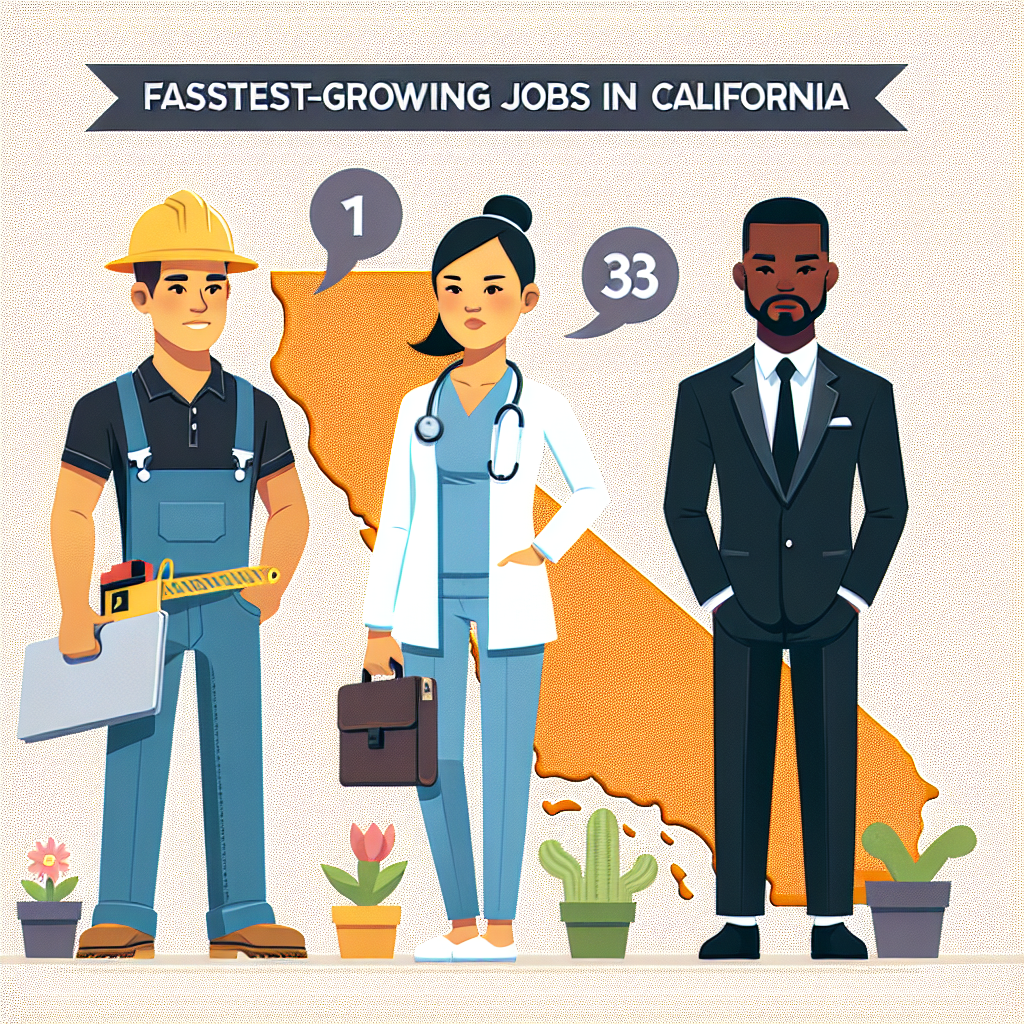California’s labor market is shifting quickly as technology, climate policy, and demographic change reshape demand for skills. This article breaks down which occupations are expanding fastest, why they matter for your career choices, and practical steps you can take to position yourself for opportunity in a competitive state economy.
Fastest-growing careers in California: sectors to watch
Certain industries are driving most of the employment growth in California. Understanding these sectors helps job seekers, students, and mid-career changers target training and employers that are actively hiring.
Key growth sectors
- Healthcare and biotechnology — roles like registered nurses, medical technicians, and biotech lab staff as the population ages and biotech R&D expands.
- Technology and data science — software engineering, machine learning specialists, cloud engineers, and cybersecurity professionals remain in high demand.
- Green energy and clean tech — solar installers, energy auditors, electric vehicle (EV) technicians, and energy storage specialists driven by state climate goals.
- Construction and skilled trades — renewable energy projects, housing work, and infrastructure upgrades increase demand for electricians, carpenters, and equipment operators.
- Education and social services — growth in support roles, special education, and community health workers to meet social needs in diverse communities.
Why these jobs are growing
Several forces are fueling the rise of these occupations in California. State climate policies and investments accelerate clean energy projects, creating many new technical and installation roles. California’s position as a global tech hub attracts startups and established firms that need software, cloud, and AI talent. At the same time, an aging population and expanded healthcare access increase demand for clinical and support staff. Finally, public and private investment in infrastructure and housing creates steady demand for skilled trades.
Regional and policy drivers
Local policies, incentives, and funding streams matter. Cities and counties that adopt ambitious climate targets or invest in transit and housing will see concentrated job growth in related fields. Similarly, large metropolitan areas with tech clusters offer more entry-level and advanced positions in data, development, and product management.
How to prepare: pathways and credentials
Preparing for fast-growing jobs means balancing technical training with practical experience and networking. Here are pathways commonly leading to these roles:
- Certificates and apprenticeships — community college programs, trade apprenticeships, and short-term industry certificates can get you job-ready faster than a four-year degree for many technical roles.
- Bootcamps and vendor certifications — coding bootcamps, cloud certifications (AWS, Azure), and cybersecurity credentials often improve hiring prospects in tech.
- Healthcare certifications — CNA, phlebotomy, medical assistant, and registered nursing programs with clinical placements are in steady demand.
- On-the-job training — many construction, solar, and EV technician roles emphasize hands-on experience and employer-sponsored training.
Where to find openings and support
Use targeted job boards, industry associations, and college career centers to find roles that fit your training level. For students and recent graduates, a useful resource that compiles free and paid job board options for college job hunting is available: a guide to job boards for college students in the USA (free and paid options). This can help you prioritize platforms that reach employers hiring entry-level talent in the state.
Skills employers ask for
Employers typically seek a mix of technical and soft skills. Technical skills vary by sector — coding languages, cloud platforms, lab techniques, or electrical competencies — while soft skills like communication, teamwork, and problem-solving are universally valued. Continuous learning and adaptability are particularly important in rapidly evolving fields like AI and renewable energy.
Salary and labor market data
Wages vary widely across occupations and regions. For current statistics on employment levels and wages in California by occupation, the U.S. Bureau of Labor Statistics provides detailed state-level data that can help you benchmark pay expectations and identify high-paying growth roles: BLS Occupational Employment and Wage Statistics for California.
Practical steps you can take today
- Map desired jobs to required skills and certifications, then enroll in targeted training or apprenticeships.
- Build a portfolio or practical experience—open source contributions, internships, clinical hours, or trade projects.
- Network with employers through industry meetups, professional associations, and college career fairs.
- Apply broadly and tailor each resume/cover letter to highlight the skills most relevant to the role.
FAQ
Q: What entry-level fields are easiest to break into quickly?
A: Health support roles (CNA, medical assistant), solar installation apprenticeships, and some tech bootcamp pathways (web development, help desk) often lead to jobs within months of training.
Q: Do I need a four-year degree to access fast-growing jobs in California?
A: Not always. Many high-growth roles are accessible via certificates, apprenticeships, vocational training, or industry certifications. Advanced positions in biotech or data science may still require degrees.
Q: How should I choose between moving to a tech hub versus training locally?
A: Consider cost of living, commute, and opportunity concentration. Tech hubs offer more openings and networking but higher living costs; remote and hybrid roles have expanded opportunities outside major metros.



